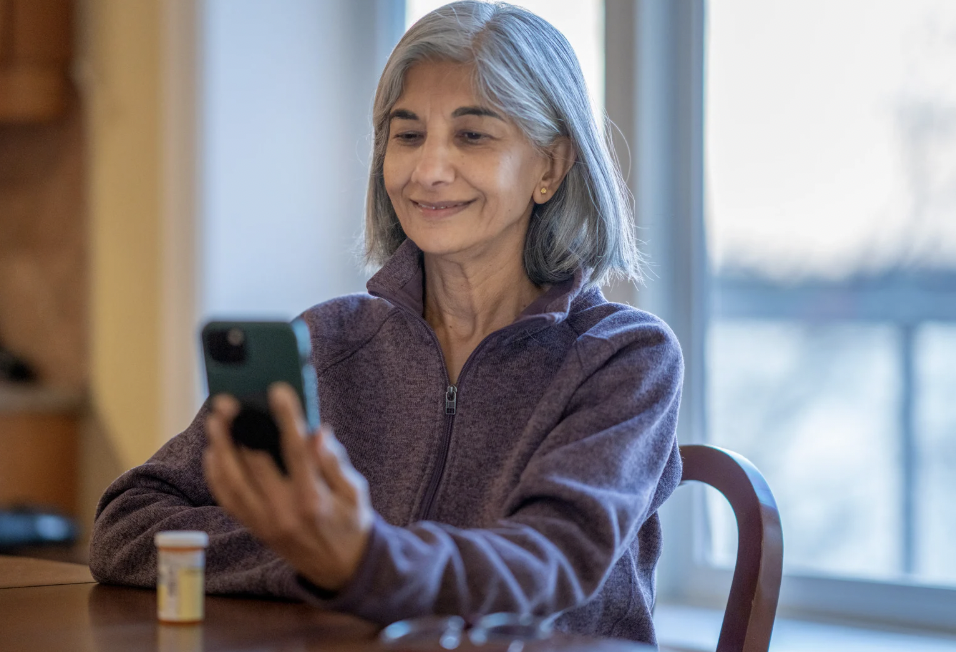As the population ages, the need for accessible and comprehensive healthcare for seniors becomes increasingly critical. In New Mexico, where many older adults live in rural or underserved areas, accessing timely and specialized geriatric care can be particularly challenging. Telehealth has emerged as a vital tool in addressing these challenges, offering seniors the opportunity to receive high-quality care from the comfort of their homes. This blog explores the role of telehealth in geriatric care in New Mexico, highlighting the benefits it offers to older adults and the healthcare system, as well as the challenges and opportunities it presents.
The Growing Need for Geriatric Care in New Mexico
New Mexico’s aging population presents unique healthcare challenges, including an increased demand for geriatric services. Key factors contributing to this need include:
- Aging Population
- Rising Numbers of Older Adults: The population of older adults in New Mexico is growing rapidly. By 2030, it is projected that nearly one in three New Mexicans will be over the age of 60. This demographic shift increases the demand for healthcare services tailored to the needs of seniors.
- Increased Prevalence of Chronic Conditions: Older adults are more likely to experience chronic conditions such as diabetes, heart disease, arthritis, and dementia. Managing these conditions requires ongoing medical attention, specialized care, and frequent monitoring.
- Barriers to Accessing Geriatric Care
- Geographic Isolation: Many seniors in New Mexico live in rural or remote areas, far from healthcare facilities. The distance and lack of transportation options make it difficult for them to access the care they need, leading to delays in treatment and worsening health outcomes.
- Healthcare Provider Shortages: The state faces shortages of healthcare providers, particularly those specializing in geriatric care. This shortage can result in long wait times for appointments, limited access to specialized services, and reduced continuity of care for seniors.
- Socioeconomic and Health Disparities
- Economic Barriers: Many older adults in New Mexico live on fixed incomes, making it challenging to afford healthcare services, medications, and transportation to medical appointments. Economic barriers can prevent seniors from receiving the care they need and contribute to poorer health outcomes.
- Health Disparities: Health disparities related to race, ethnicity, and socioeconomic status are prevalent among New Mexico’s senior population. These disparities can lead to unequal access to care, differences in treatment, and variations in health outcomes.
How Telehealth is Transforming Geriatric Care
Telehealth offers a powerful solution to the challenges of geriatric care in New Mexico, providing seniors with accessible, personalized care that supports their health and well-being. Here’s how telehealth is making a difference:
- Improved Access to Healthcare Services
- Virtual Consultations with Geriatric Specialists: Telehealth enables seniors to consult with geriatric specialists without the need for long-distance travel. This is particularly beneficial for managing complex conditions, reviewing medications, and receiving expert advice on aging-related issues.
- Access to Primary and Preventive Care: Telehealth allows older adults to receive routine primary care and preventive services from the comfort of their homes. Regular virtual check-ups, screenings, and health assessments help ensure that seniors receive timely care and maintain their overall health.
- Convenient and Flexible Care
- Care from Home: Telehealth allows seniors to receive care without leaving their homes, reducing the need for transportation and minimizing the risk of exposure to infectious diseases, such as COVID-19. This is especially important for those with mobility challenges or chronic conditions that make travel difficult.
- Flexible Scheduling: Telehealth offers flexible scheduling options, allowing seniors to access care at times that are convenient for them. This flexibility helps reduce the likelihood of missed appointments and ensures that seniors receive consistent care.
- Enhanced Monitoring and Management of Chronic Conditions
- Remote Monitoring: Telehealth enables remote monitoring of chronic conditions such as hypertension, diabetes, and heart disease. Seniors can use telehealth-compatible devices to track their vital signs, which are then transmitted to their healthcare provider for review. This ongoing monitoring allows for timely interventions and adjustments to treatment plans.
- Medication Management: Managing multiple medications is a common challenge for seniors. Telehealth facilitates regular virtual check-ins with healthcare providers to review medications, discuss potential side effects, and ensure that seniors are adhering to their prescribed regimens.
- Support for Caregivers and Family Members
- Involvement in Care: Telehealth platforms often allow caregivers and family members to participate in virtual appointments, ensuring that they are informed about their loved one’s health and treatment plan. This involvement is crucial for coordinating care and providing support to seniors.
- Education and Resources: Telehealth platforms can provide caregivers with access to educational resources on topics such as managing chronic conditions, understanding dementia, and providing end-of-life care. These resources empower caregivers to provide better support and improve the quality of care for seniors.
- Addressing Behavioral Health Needs
- Mental Health Support: Telehealth has expanded access to mental health services for seniors, providing virtual counseling, therapy, and psychiatric consultations. This is particularly important for addressing issues such as depression, anxiety, and loneliness, which are common among older adults.
- Cognitive Assessments: Telehealth enables healthcare providers to conduct cognitive assessments remotely, helping to identify early signs of dementia or Alzheimer’s disease. Early detection is key to managing these conditions and improving the quality of life for seniors.
Challenges in Implementing Telehealth for Geriatric Care
While telehealth offers significant benefits for geriatric care, there are challenges that must be addressed to ensure its successful implementation:
- Technology and Infrastructure Barriers
- Access to Devices and Internet: Not all seniors have access to the necessary devices or reliable internet connectivity to participate in telehealth. Expanding access to technology is essential for ensuring that all older adults can benefit from telehealth services.
- Digital Literacy: Some seniors may lack the digital literacy needed to navigate telehealth platforms effectively. Providing education and technical support is crucial for helping seniors overcome this barrier and ensuring they can access geriatric care through telehealth.
- Engagement and Participation
- Encouraging Participation in Telehealth: Encouraging seniors to actively participate in their healthcare through telehealth can be challenging, particularly if they are accustomed to in-person visits. Healthcare providers must emphasize the benefits of telehealth and how it can improve their health outcomes.
- Adherence to Treatment Plans: Ensuring that seniors adhere to their treatment plans, including medication regimens and follow-up appointments, is critical for effective geriatric care. Telehealth platforms must provide ongoing support and monitoring to help seniors stay on track.
- Privacy and Security Concerns
- Protecting Patient Data: Ensuring that telehealth platforms are secure and compliant with privacy regulations, such as the Health Insurance Portability and Accountability Act (HIPAA), is essential for protecting seniors’ health information and maintaining trust in telehealth services.
- Confidential Care: Seniors may have concerns about the confidentiality of their health information when using telehealth, particularly for sensitive issues related to mental health or chronic conditions. Healthcare providers must reassure seniors that telehealth platforms are designed to protect their privacy.
Strategies for Maximizing the Impact of Telehealth in Geriatric Care
To maximize the impact of telehealth in geriatric care, several strategies can be implemented:
- Expanding Access to Technology
- Broadband Infrastructure Investment: Continued investment in broadband infrastructure is essential for expanding telehealth access, particularly in rural and underserved areas. Public-private partnerships and government funding can help bridge the digital divide.
- Access to Devices: Programs that provide low-cost or free devices to seniors can help ensure that all older adults have the tools they need to participate in telehealth and access geriatric care services.
- Integrating Telehealth into Geriatric Care Programs
- Public Health Campaigns: Telehealth should be integrated into public health campaigns that focus on senior health, such as fall prevention, chronic disease management, and mental health awareness. This includes using telehealth platforms to deliver health education, conduct remote monitoring, and provide personalized care.
- Collaboration with Senior Centers and Community Organizations: Partnering with senior centers and community organizations can help expand the reach of telehealth services and ensure that they are accessible to all older adults. Community-based programs can provide education, support, and resources to help seniors navigate telehealth services and engage in geriatric care.
- Promoting Provider Adoption and Training
- Provider Education and Support: Healthcare providers specializing in geriatric care should receive ongoing education and support to effectively integrate telehealth into their practices. This includes training on the use of telehealth platforms, best practices for virtual care, and strategies for engaging seniors in their healthcare through telehealth.
- Incentivizing Telehealth Use: Reimbursement models and regulations should incentivize the use of telehealth for geriatric care, ensuring that providers are compensated fairly for virtual services and that telehealth is sustainable in the long term.
The Future of Telehealth in Geriatric Care in New Mexico
The future of telehealth in geriatric care in New Mexico is promising, with the potential to significantly improve health outcomes and enhance the quality of life for older adults across the state. Key areas of focus for the future include:
- Comprehensive Geriatric Care Programs
- Integrated Telehealth Services: Telehealth should be integrated into comprehensive geriatric care programs that address the full spectrum of senior health needs, from chronic disease management and medication monitoring to mental health support and end-of-life care.
- Population Health Management: Telehealth can be used to manage the health of entire senior populations, using data analytics to identify trends, monitor health outcomes, and target interventions where they are needed most.
- Advanced Telehealth Technologies
- Artificial Intelligence and Machine Learning: Future telehealth platforms may incorporate artificial intelligence and machine learning to provide personalized geriatric care recommendations, predict health risks, and support clinical decision-making.
- Wearable Devices and Remote Monitoring: The use of wearable devices and remote monitoring tools will continue to expand, allowing for more continuous and proactive geriatric care.
- Sustainable and Equitable Telehealth Solutions
- Long-Term Sustainability: Ensuring the long-term sustainability of telehealth services for geriatric care requires ongoing investment in technology, infrastructure, and training. Public-private partnerships and government support will be essential for maintaining and expanding telehealth in New Mexico.
- Equitable Access: Efforts to expand telehealth must prioritize equity, ensuring that all seniors, regardless of their location, income, or background, have access to geriatric care services. This includes addressing disparities in technology access, digital literacy, and healthcare provider availability.
Conclusion
Telehealth is set to play a transformative role in the future of geriatric care in New Mexico, offering new opportunities to improve health outcomes, reduce disparities, and increase access to care for older adults across the state. By integrating telehealth into geriatric care programs, expanding access to technology, and promoting provider adoption, New Mexico can create a more proactive and effective healthcare system for its aging population. As technology continues to evolve and access expands, the impact of telehealth on geriatric care in New Mexico will only grow, leading to healthier and more connected seniors.

